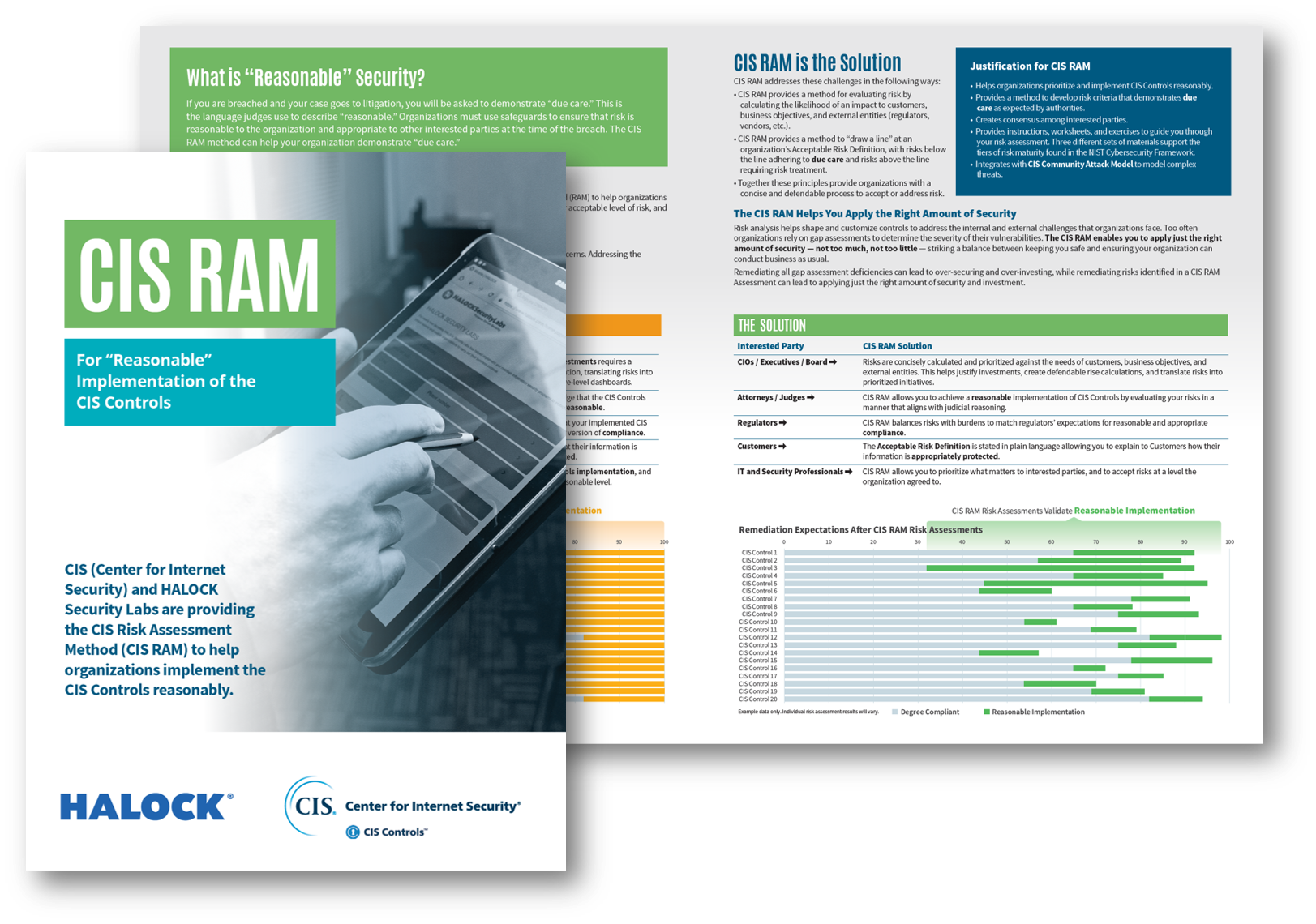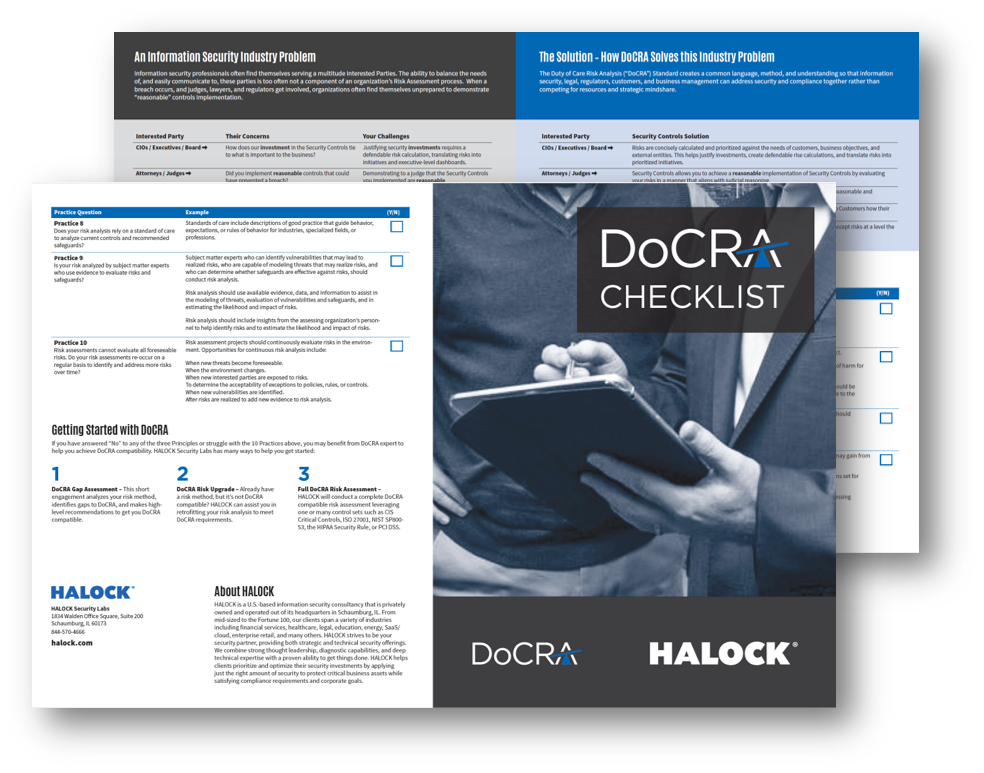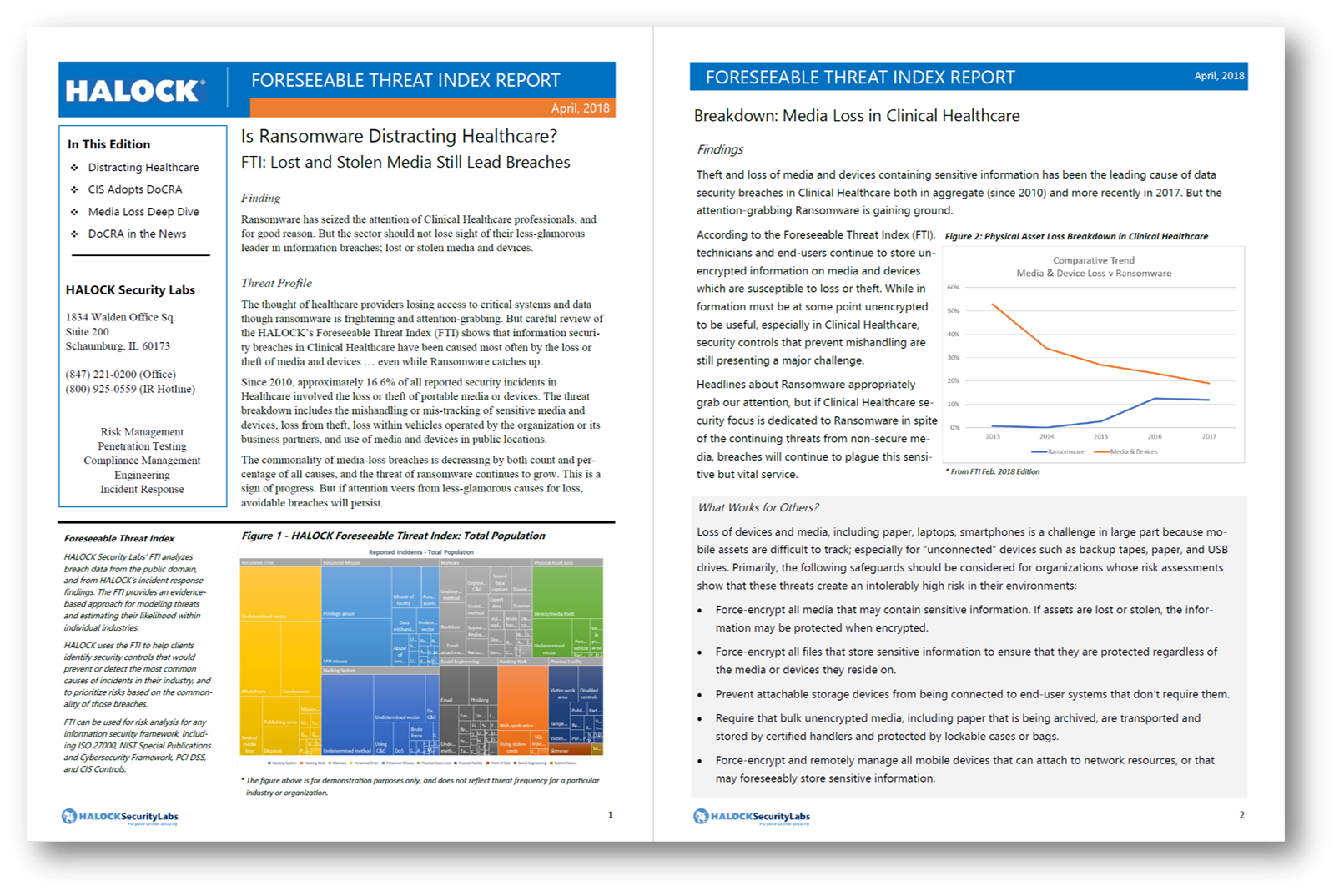RISK ASSESSMENT
Why Do Laws and Regulations Require Risk Assessments for Achieving Compliance?
Businesses are often surprised to find that regulations are designed to be reasonable. Since 1993, Executive Order 12866 has required that regulations be overseen using cost-benefit analysis; a requirement that regulators interpret as “risk.” In its most practical application, risk-based security simply requires that safeguards are no more burdensome than the risk they protect against. And it’s not just regulators who say so.
Judges in negligence cases – including data breach cases – use “multi-factor balancing tests” to determine whether safeguards were reasonable protections against the foreseeability of harm. These balancing tests are very close in design to information security risk assessment standards such as ISO 27005, NIST SP 800-30, RISK IT, and DoCRA, an emerging standard for assessing risk in accordance with judicial and regulatory expectations. The Center for Internet Security adopted DoCRA as CIS RAM, the first information security risk assessment method that is explicitly based on duty of care analysis.
Why are risk assessments so commonly required?
Regulators, judges, and information security standards bodies know that there is no one perfect way to secure systems and information. They all know that certain safeguards can be helpful to some organizations while crippling others. They know that effective controls in one environment can create wide-open vulnerabilities in another. And most organizations just cannot operate while being “fully compliant” with any one security standard.
- Organizations from many industries trust HALOCK to analyze, prioritize, and even accept their information risks in ways that balance the organizations’ needs with the needs of the public.
- Leading law firms work with HALOCK to bring their clients defensible risk analysis and risk treatment plans to build consensus with regulators and legal authorities.
- CIS entrusted HALOCK with developing their first information security risk assessment method for implementing the CIS Controls reasonably, known as CIS RAM.
HALOCK guides our clients through Risk Assessments so that they can identify, in a clear, repeatable manner, what parts of their organization they must prioritize to address both compliance and security. And using HALOCK’s “Foreseeable Threat Index” HALOCK’s clients know what threats to consider in their industry, how common those threats are in creating security incidents, and how they compare to their peers who have suffered from security incidents.
HALOCK’s risk assessments support clients with the following security and compliance needs:
• ISO/IEC 27001/27002/27005
• NIST Special Publications / FIPS
• PCI DSS
• HIPAA Security Rule
• Gramm Leach Bliley Safeguards Rule
• Massachusetts 201 CMR Part 17.00
• Meaningful Use
• And recovery from security incidents overseen by regulatory agencies, such as the Federal Trade Commission, Department of Health and Human Services Office for Civil Rights, and others.
In addition to the Risk Assessment, HALOCK offers a full suite of Risk Treatment and Risk Management programs to help you achieve and maintain compliance.
Resources for your risk strategy:
 |
Learn more about CIS RAM.
Download the Executive Prospectus.
Foreseeable Threat Index Newsletter
HALOCK proudly joined CIS in Washington DC March 19, 2018 for the launch of CIS Controls Version 7.
Our Partner, Chris Cronin as a panelist for the event.
 |
 |
 |
HALOCK Security Labs
1834 Walden Office Square | Suite 200 | Schaumburg, IL 60173
P: 8042124352
https://www.halock.com
1834 Walden Office Square | Suite 200 | Schaumburg, IL 60173
P: 8042124352
https://www.halock.com
Copyright © 2018 HALOCK Security Labs. All Rights Reserved.
